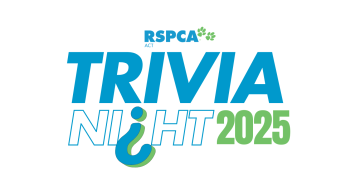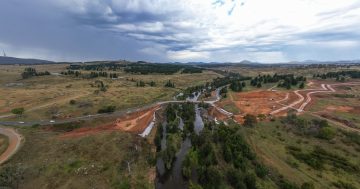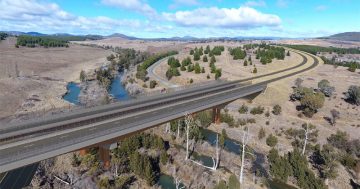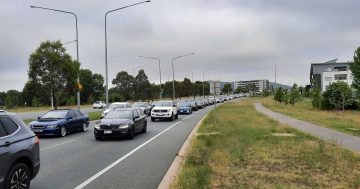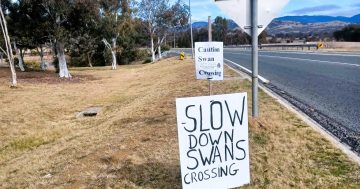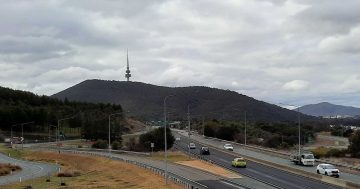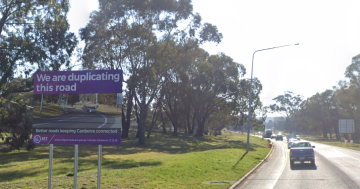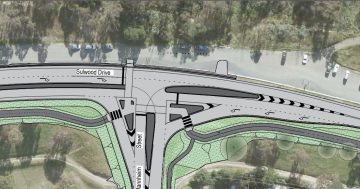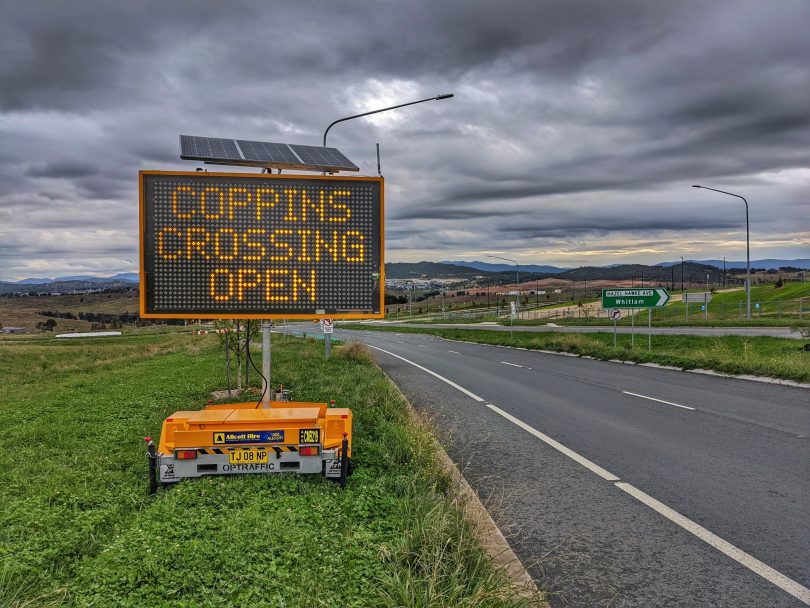
The electronic signs at Coppins Crossing were installed after ‘community feedback’, Minister for City Services Chris Steel said. Photo: Molonglo Valley Community Forum.
Molonglo Valley locals have rejoiced at the sight of five new electronic signs which popped up around the area to advise commuters if Coppins Crossing is open or closed.
One local called the new signs a “lifesaver”, and their arrival was warmly welcomed by many in the area who had previously described the previous signage as difficult to see and hard to read.
Minister for Transport and City Services Chris Steel said the electronic signage had been installed after the government became aware of “community feedback“, which suggested a need for them.
Last week, the operator of the website Is Coppins Crossing Open – who wished to remain anonymous – called the flip-down signage, which was installed in early February, “inadequate”.
The site operator told Region Media he had been “calling for those illuminated signs – like the ones we saw all around the place in COVID-19 – so they are bright and flashy and you can’t miss them” to be erected instead.
In early February, in response to a question on notice in the ACT Legislative Assembly from Member for Murrumbidgee Giulia Jones, Mr Steel said the government had already installed additional signage in February at a cost of $2000.
His response also said there were no plans to automate the existing signage at Coppins Crossing, although his position on that now seems to have changed.
Mr Steel said on Friday the new electronic signs, which can be updated and changed remotely, formed part of a broader ACT Government strategy to build more intelligent transport systems across Canberra’s road network.
“We [want to be able] to inform commuters ahead of time so that they can make better choices about their journeys to work,” Mr Steel said. “We’ve done that with variable messaging and electronic signage on places like Adelaide Avenue and the Tuggeranong Parkway.”
The electronic signage will cost the ACT Government approximately $200 a week, Mr Steel’s office confirmed to Region Media.
Mr Steel said the Traffic Operations team could monitor the traffic network and rising water levels after significant rain events and could then update signage with road closure information accordingly.
He noted electronic gates at Coppins Crossing, which closed when the water levels got too high, would also prevent people from attempting to cross when it was unsafe to do so.
The new signs have been installed at:
- John Gorton Drive after Opperman Avenue
- John Gorton Drive after Holborow Avenue
- John Gorton Drive before Hazel Hawke Avenue
- William Hovell Drive before John Gorton Drive, east and westbound.
Mr Steel said the government was well aware of the need for better signage to be in place until the new bridge is built and had been progressively delivering on that over the last few months.
It’s expected the new four-lane bridge, which will extend John Gorton Drive and span 227.5 metres over the river, will be completed and open to traffic by the end of 2025.
It will be built above the level of a one-in-a-hundred-year flood in the Molonglo River and is jointly funded by the Commonwealth and ACT governments.
The ACT Government said that the new arterial road and bridge crossing will support public transport, active travel (on-road cycle lanes and off-road shared paths) and, eventually, a future light rail route.











